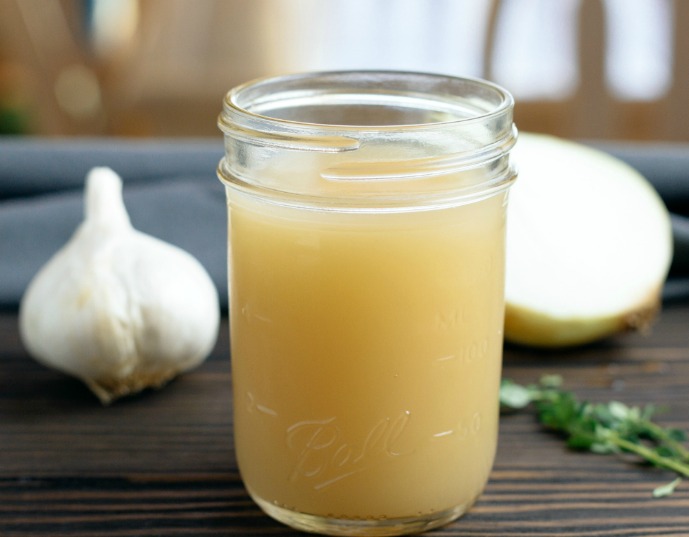6 Steps On How To Conquer The Keto Flu (And Stay Sane)

6 Steps On How To Conquer The Keto Flu (And Stay Sane)
The ketogenic diet is an excellent tool to take charge of your weight and your life again. The bad news is that the ketogenic approach has its downsides, the good news is that they are temporary.
The keto side effect that everyone will experience more or less is the keto flu. It is a necessary evil, to enter the magical gates of ketosis.
For many, the keto flu may sound like a nasty experience, but it's actually a good thing.
The phenomenon called keto flu happens because our bodies are adapting to lack of carbs. This adaptation is similar to withdrawing from other addictive substances like alcohol and tobacco.
Over the years, our bodies have mastered the art of using carbs for energy. Our brains run and breathe on carbs.
Such a significant change like switching primary energy sources (from carbs to fat) has a drastic (fortunately temporary) effect on our bodies and mind.
Keto flu is a set of symptoms that you will likely experience, once you cut out the carbs from your, start depleting the energy stores and slowly entering ketosis.
Oh, and it has nothing to do with the traditional flu, except the name.
Why does it happen?
The main reason why keto flu happens is the fact that you cut out the carbs from the menu. It's just your body’s way of adapting the situation.
Once you are low on carb intake, you force your body to deplete existing glycogen stores and start burning fatty acids for energy (instead of carbohydrates).
Ketosis aka body running on fat as the main energy source is actually our body's natural superpower that has served us from the beginning of humankind.
Anytime we don't feed ourselves; our bodies will eventually go to the energy stores - fat - for the energy. If this happens, then your body has entered into a state called ketosis.
Keto flu symptoms
The transition period from carb burner to fat burner will vary from person to person. Also, the severity and number of symptoms will vary.
The most common keto flu symptoms are nausea, constipation, diarrhea, headache, irritability, weakness, muscle cramps, dizziness, muscle soreness, and sugar cravings.
Most people usually experience one or two of these symptoms at the same time. That is why it's reasonable to postpone the start of the keto diet to a time when things are quieter in your life, and your stress levels are down.
This will increase the likelihood of success and better results.
Does it last forever?
Fortunately, no. This is one of the most popular questions when it comes to keto and keto flu.
Most ketoers will experience keto flu to a greater or lesser extent. Many first-timers wrongly blame the diet in their bad feeling, without realizing that it is supposed to be that way, and it doesn't last forever.
Keto flu is the first real sign that you are on the right track to ketosis, just keep doing whatever you are doing, and soon you will end up in ketosis.
How long does keto flu last? It depends how much carbs are you eating, are you supplementing your body with electrolytes and are you eating enough fat.
On average, if you cut down your carbs less than 20 grams per day, eat plenty of fat and electrolytes, the keto flu will probably last up to 7 days.
Of course, there are more extreme cases, but this depends on how strictly you approach keto.
How to conquer it?
1. Drink enough water

This may sound obvious, but you need to be extremely careful about getting dehydrated during keto.
Once you cut out carbs, your body will excrete much water from your body, which will also contribute to keto flu.
During the first weeks, when your body is adopting, you will be visiting the toilet more than usual, but that's okay.
If you want to enjoy the diet, burn fat and stay sane, then keep a bottle of water near you at all times and keep your body hydrated.
2. Electrolytes
The main reason why you will experience the keto flu is, that once you remove carbs from your daily menu, your body will start excreting much water from your body, together with essential minerals called electrolytes.
They help our bodies to make sure that specific functions run at optimal levels. If you remove electrolytes from the body, then you will start experiencing keto flu symptoms.
Electrolytes for the body is similar to motor oil for your car - it doesn't make the engine run, but it's necessary to keep everything to functioning correctly.
To ramp up your electrolyte intake, eat more Himalayan salt, sodium, and magnesium.
3. Drink bone broth

A second, and probably simpler way to replenish your electrolytes is to drink bone broth.
It's an effective keto flu remedy, and it reduced keto flu symptoms dramatically. Keto flu is an excellent companion during the whole keto journey, not just during the beginning.
The only thing you need to be extremely cautious about is to make sure, that you will choose a low-carb bone broth.
4. Eat more fat
Eating more fat is 9 times out of 10, the primary solution for most problems during your ketogenic journey.
Eating enough fat will kick you into ketosis and will keep you there. This is the first problem that many newbie ketoers will face - they don't eat enough fat, in order to enter into ketosis the first time. As you probably know, during keto diet, fat should come from 80% of your daily calories.
If you are having trouble eating more fat, then consider trying fat bombs - they are a delicious way to ramp up your fat intake.
Also, add an extra tablespoon of coconut or MCT oil to your morning coffee or tea. It will give you extra energy and support your ketosis goals for the day.
If following macros sound scary at first, then consider starting the lazy keto version first. In simple terms, you still don't eat carbs, but you can eat as much fat as you wish.
These oils are best for the keto diet.
5. Exogenous ketones
Another way to minimize the keto flu is to use exogenous ketones. Now, I don't recommend these supplements for first-time keto dieters.
Bulking up with supplements the first time will disservice you. You should try to experience the whole journey first just by enjoying morning bacon and fatty coffee.
But it's no secret, that exogenous ketones will help to minimize fatigue and other keto flu symptoms while boosting energy and ketone levels.
6. Low-intensity exercise
Keto diet is known for its ability to be effective in weight management without the need for exercise.
Although it's not essential, it can help. The most significant benefit, low-intensity exercising will provide, is that it will help to deplete the glycogen stores in your body.
This needs to happen anyway before you will enter ketosis, the sooner it happens, the better.
That's why it's perfect to start your day with a bottle of water and a brisk walk around your neighborhood.
Walking also has additional benefits like giving your mornings a fresh start, will wake you up and make you feel more energized.
Last thoughts
At the end of the day, don't be scared to face the ugly keto flu. It isn't so bad in reality, and it means that you are on the right track with your diet.
Just give yourself and your body time to adapt. Keep in mind that it's vital to replenish your electrolyte levels, keep your body hydrated, and the most important: keep eating enough fats.
If you eat too little, you will not enter ketosis, and you will feel bad longer. Ketogenic diet should be an enjoyable journey, not a fast acceleration from point A to B.
Enjoy your morning bacon, your coffee with whipped cream and those full-fat meals that are delicious.
About The Author:
An author and health enthusiast, Alex Reed, started Bodyketosis.com with a mission to help you to take charge of your weight and health using the ketogenic lifestyle. Through personal experience and extensive research, he offers insightful tips for everything keto.






ChihYu Smith
Thank you for the information here. Very useful. I appreciate it!